#Danube Island
Text

• Vienna, Austria (July 2022)
#austria#vienna#hipster#photographers on tumblr#wien#olgatodorovic#life#österreich#europe#boho#sansibar#bar#danube#island#danube island#huawei#camera photo#camera phone#summer#july#2022#blue#my picutre#my photgraphy#river#archtitecture
2 notes
·
View notes
Text
Danube and Wien Rivers Vienna Austria
Danube and Wien Rivers Vienna Austria
The Danube River in Vienna isn’t as dramatic as rivers in other European cities, like the Thames in London, Spree in Berlin, Vltava in Prague, or Seine in Paris. Unlike in Budapest, the Danube doesn’t flow through picturesque parts of the city. Instead, it crosses the upper section of Vienna away from Vienna’s Ringstrasse and the beautiful historical center.
Wien River Bridge in Front of…
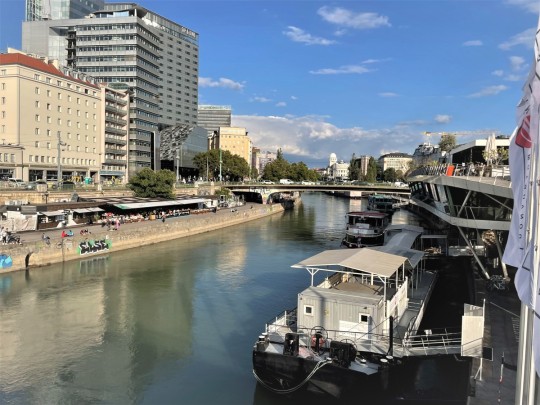
View On WordPress
#1949 film The Third Man#Alte Donaul#Danube Floods#Danube Island#Danube River#Danube Tower#Donauinsel#Donaukanal#Emperor Franz Josef I#Lichterfest#Naschmarkt#Night Market#Old Danube#Schönbrunn Palace#The Spittelau Waste Incineration Plant#Vianne Light Festival#Vienna Austria#Vienna Giant Ferris Wheel#Vienna Ringstrasse#Wien River#Wienfluss
1 note
·
View note
Text

MARGARET ISLAND
31 notes
·
View notes
Text

Căscioarele (Călărași County), the most famous find from the Neolithic site excavated in the late 1960s on a Danube island named Ostrovelul.
The site has been attributed to the Gumelnița (Karanovo VI) culture, one of the most spectacular phenomena of the eastern Balkans during the 5th millennium BC.
The Gumelniţa culture is remarkable by the richness of its anthropomorphic and zoomorphic representations, but the miniature sanctuary found in the earliest occupation phase at Căscioarele trumps them all.
Although smaller models of houses (believed to be sanctuaries) appeared on other Gumelniţa sites as well, both in southern Romania and in Bulgaria, the Căscioarele specimen has so far remained unique. It has been dated between 4,800 and 4,550 BC and may be seen in the permanent exhibit of the Lower Danube Museum in Călărași.
#romania#eastern europe#balkans#neolithic#historical sites#archeology#archeologicalsite#antropomorphic#zoomorphic#sanctuary#houses#danube#museum#archeologist#finding#history#europe#island
17 notes
·
View notes
Text
#Liberty #Island 23.11.2023
#liberland #settlement #settlers #danube #serbia #croatia #river #video
youtube
0 notes
Quote
Switching control of the stern banks, the Danube utterly declining to recognize the island in order to inflict a maximum amount of any kind outside of eyes, -edgar
empres
#QUOTE#DAY 7#Makes you HAPPY and peaceful in the bath of the elements—water#wind#Sand#and the great fire of the sun—thinking of the long Twisting gorge that follows#and the Danube utterly declining to recognize the island is where you are headed
Maybe to hell#sbnkalny.
0 notes
Text
10 incredibly beautiful wonders of nature in Germany

Danube Gorge near Weltenburg
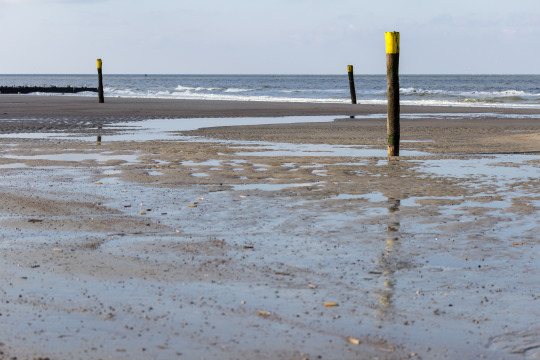
2. The Wadden Sea

3. Elbe Sandstone Mountains / "Saxonian Switzerland"
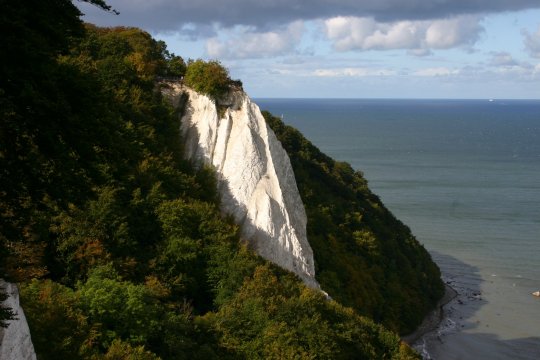
4. Chalk cliffs of the island of Rügen

5. Blautopf (literally "Blue Pot") karst spring in Blaubeuren

6. Devil's Wall near Thale in the Harz Mountains

7. Devil's Table near Hinterweidenthal in the Palatinate Forest
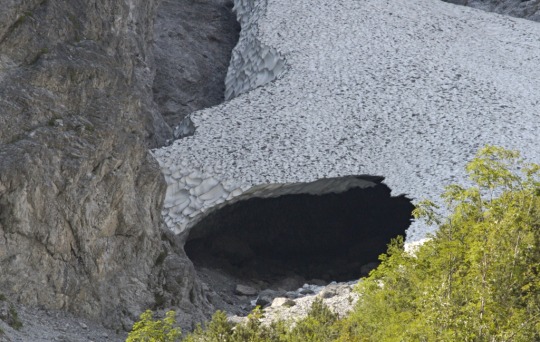
8. Ice Chapel on the Watzmann Mountain in the Berchtesgaden Alps, a permanent ice cave in a snow field

9. Triberg Waterfalls in the Black Forest

10. Saalfeld Fairy Grottoes
3K notes
·
View notes
Text
Sziget
7–12 August, Óbuda Island, Budapest
In the middle of the Danube River in Budapest is Óbuda Island, a 108-hectare strip of land that has played host to Sziget festival since its inception 31 years ago. Since then, the festival has grown from a showcase of local talent to a home for international superstars, while retaining its transgressive spirit. From Wednesday to Monday this August, the city is taken over by a line-up mixing pop and dance, with the likes of Four Tet, Fred again.. and Overmono rubbing shoulders with Becky Hill, Nia Archives, Yard Act and more.

TICKETS
-
Louis Tomlinson has been mentioned in Rolling Stone UK’s article on summer festivals.
38 notes
·
View notes
Text
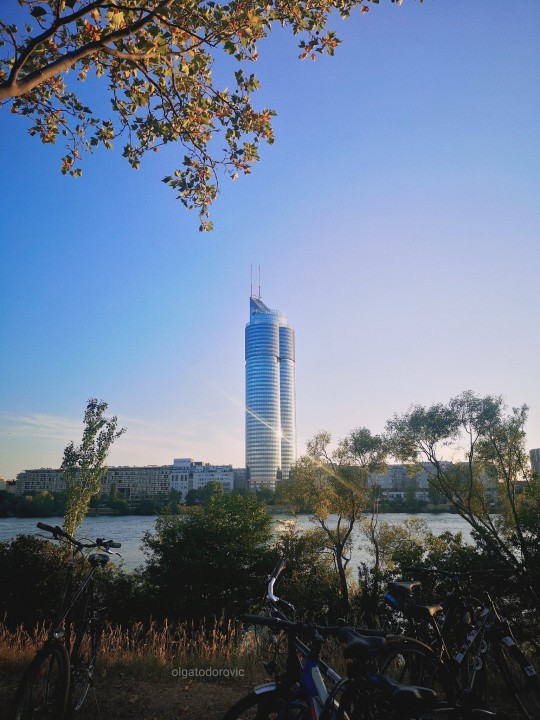
• Vienna, Austria (July 2022)
#austria#vienna#hipster#photographers on tumblr#wien#olgatodorovic#life#österreich#europe#boho#huawei#summer#handelskai#donauinsel#donau#danube#danube island#july#2022#camera photo#camera phone#nature#outside
1 note
·
View note
Text

Miss Universe Slovakia 2023 National Costume
'Ethereal Serenity' The golden threads shimmer subtly, evoking the image of the Slovak landscape and the Danube river, and symbolizing my homeland Rye Island which is a river island in southwestern Slovakia. The corset design creates the shape of the heart, symbolising my beautiful country in the heart of Europe with it's gorgeous culture, history, and hospitality as well as the enduring bonds of family and community to emphasize the importance of love and unity in Slovak culture. Above all, this redesign is crafted to empower femininity. It transcends mere clothing, becoming a statement of confidence and individuality shown in the balance between tradition and innovation. In providing both comfort and freedom it is a powerful celebration of feminine strength and poise, encouraging us all to take pride in our identities with true confidence and grace. "Ethereal Serenity" is more than just clothing; it is a model of success and elegance to inspire the world.
29 notes
·
View notes
Text
Ukrainian forces use a BM-27 that's been transplanted onto a barge in the middle of the Danube to bombard Snake Island, 2022
13 notes
·
View notes
Text
Midnight Pals: The Willows
Algernon Blackwood: submitted for the approval of the midnight society, i call this the tale of the willows
Lovecraft: g-guys this is my favorite story!
Lovecraft: ooh it's so good, it's so scary!
King: oh yeah? what's so scary about it?
Lovecraft: there's a swede in it
Blackwood: so i was canoeing down the river danube
Blackwood: with my companion
Blackwood: who was a swede
Lovecraft: [sweats]
Blackwood: anyway we got stuck on an island
Blackwood: full of willows
Blackwood: and important thing to remember
Blackwood: these aren't weeping willows
Blackwood: they're, like, kinda brambly scrubby riverside willows
Blackwood: make sure you get that right
Blackwood: and there are all these super creepy willows on the island
Blackwood: now if any of you lot were thinking of illustrating this story
Blackwood: i want to emphasize
Blackwood: NOT weeping willows
Stephen King: so what are they?
King: like
King: weeping willows?
Blackwood:
Blackwood: no
Blackwood: so these are NOT weeping willows
Poe:
King:
Barker:
Koontz:
Lovecraft:
Blackwood: so all together now
Blackwood: what kind of willows are they?
Poe:
King:
Barker:
Koontz:
Lovecraft:
King: ...weeping willows?
Blackwood:
Blackwood: steve we just went over this
Blackwood: so these willows are just SUPER creepy
Blackwood: there's a weird presence on this island that makes you just get super scared of trees
Blackwood: cuz let me tell you
Blackwood: these trees
Blackwood: real fucked up
Blackwood: so these trees are just real fucked up
King: how so?
Blackwood: well they're just
Blackwood: like
Blackwood: you know
Blackwood: kinda fucked up
Blackwood: just in a general sort of way
Blackwood: so these trees, they're just kinda fucked up
King:
Poe:
Barker:
Koontz:
Blackwood: what do you want me to do, describe stuff?
Lovecraft: oh so right, you're so right
#the midnight society#midnight pals#midnight society#algernon blackwood#hp lovecraft#stephen king#clive barker#edgar allan poe#dean koontz
76 notes
·
View notes
Note
I sometimes will come across paintings of Acropolis and Athens in general from the 19th-20th century and i noticed it had in Acropolis painted a medieval tower which now is not there. What was the purpose of the tower and what happened to it?
Also were there rivers and other demolished monuments in Athens before like in the paintings?
You must mean the Frankish Tower, which was built during the Frankish Occupation around the 13th-14th centuries. After the Crusades, most of the Byzantine Empire was dismantled and many regions became Frankish or Venetian protectorates. Athens was one of them and became the Duchy of Athens. The dukes converted the Propylaea (the ancient gates to Acropolis) into their personal palace and that tower was built as part of that palace. During the Ottoman rule that followed, the Ottomans used this tower as salt store rooms and as prison. In 1874, the Greeks demolished this tower from the ancient site, so the paintings you have seen must be from the 18-19th centuries and not the 20th.

Here is a picture taken in 1870.
Some buildings around the Acropolis in the center of Athens were indeed demolished. When King Otto chose to switch the capital from Nafplio to Athens, Athens was but a tiny muddy village. Otto envisioned bringing Athens back to its former glory and he formed a plan to rebuild it as a neoclassical European capital. Therefore, buildings that did not agree with the Classical aesthetics were removed, mostly peasant houses, some Ottoman buildings and even a few Byzantine Greek churches (not all, some ruins / monuments of both styles remain). On the other hand, Ancient Greek and Roman monuments were preserved.
The river thing is going to be painful. This was something about which I was keeping a post in my drafts but I was getting mad about it every time and never completed it. Prepare for a shitstorm of painful facts. Athens is built on the Attican basin where many streams flow from the hills of the area and from the big mountains of Boeotia and Phocis in the west. In fact, Athens “used to” have 3 main rivers (Kifissós, Ilissós and Irithanós) and 700 (!) streams and creeks (i.e. Elásson and Kyklovóros, mentioning them for no reason other than that I like their names 😅). The former village come metropolis has been the target of an excessive urbanisation in various times in its recent history, most notably in the 60s to 80s time period. As the industries and economy developed, huge numbers of people started abandoning the harsh conditions in remote islands and big mountains for a more comfortable lifestyle in Athens. This caused urgent need for quick mass constructions. Especially during the military junta (1967-1974) uncountable architectural crimes were committed. The urgent need for fast and mass constructions, as well as the lack of scientific research, led to the filling and blockage of most of these rivers. Today only parts of the main rivers and only a handful of the streams are left to flow freely (around 50). Ilissós, the former sacred river of Athens, has been entirely covered and is running underground. We are not talking about Danube or Amazon but we are still talking about an overall waterway blockage worth of 800 km (~500 miles). This is also the reason even a moderate rain can make Athens flood all the time. This waterway blockage has also ruined the flora and fauna of the region. Many Athenians ask that the rivers are uncovered to run free again but the damage done is so excessive that it is too hard to undo at this point. There were “official plans” announced in 2019 about intending to free Ilissós but, you know, I am laughing.

Edward Dodwell, The waterfalls of Ilissos, Athens 1801-1806.

Ilissos river in 1955.
However the war against the river had already started in the ‘30s.
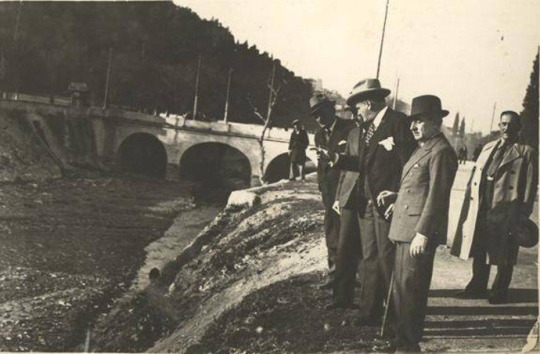
Covering Ilissos, 1937.
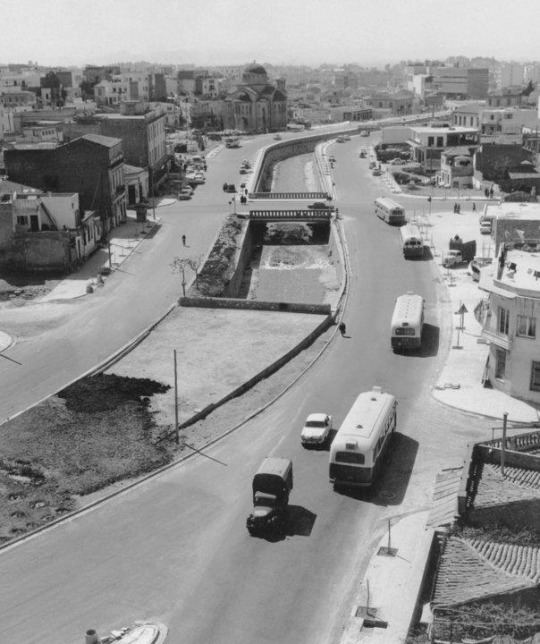
Covering MORE Ilissos river, 1963.
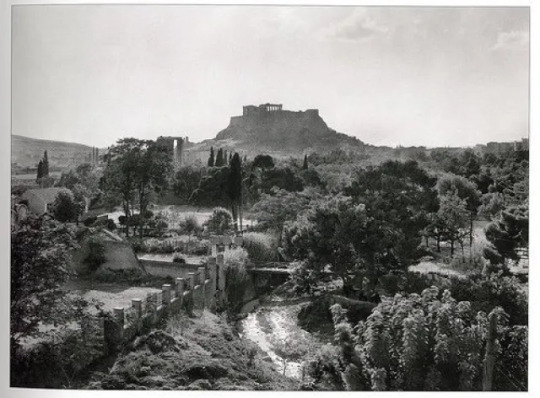
Once upon a time in verdant Athens (1910).
See more photos here.
#greece#history#cities#frankish occupation#river#greek history#athens#ilissos#kifissos#attica#sterea hellas#mainland#anon#ask#greek facts
117 notes
·
View notes
Text
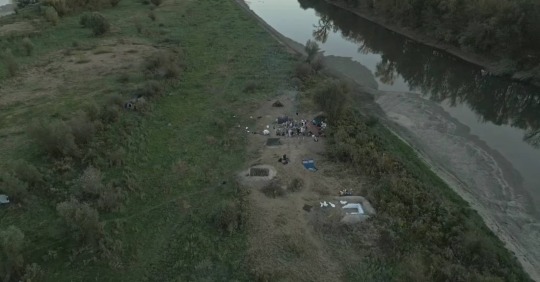
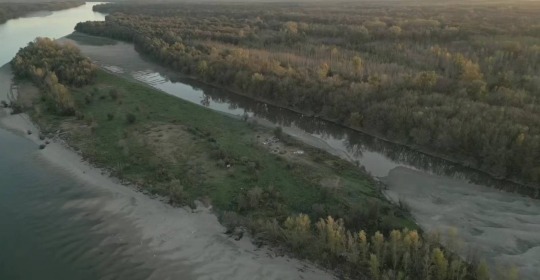
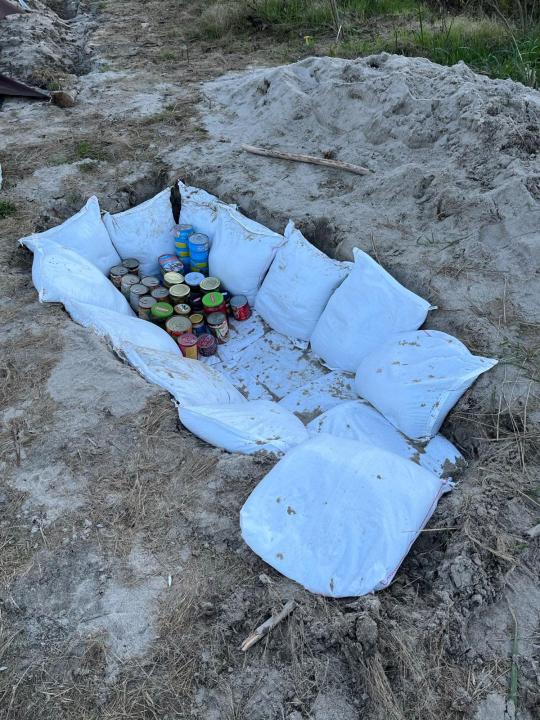
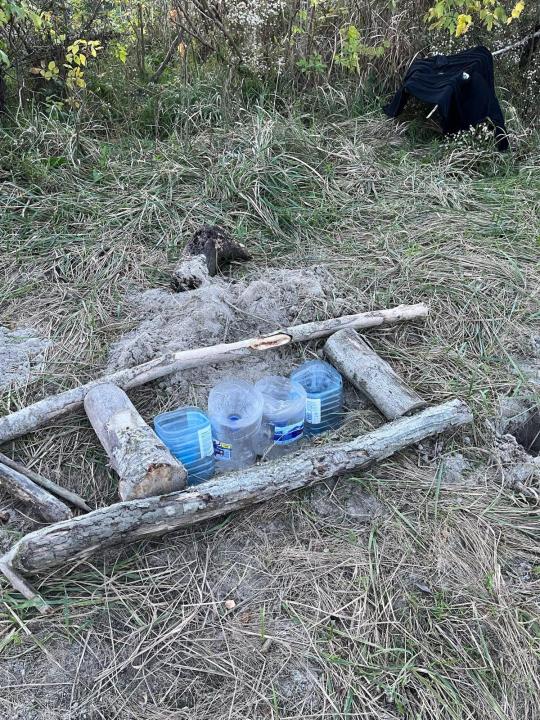

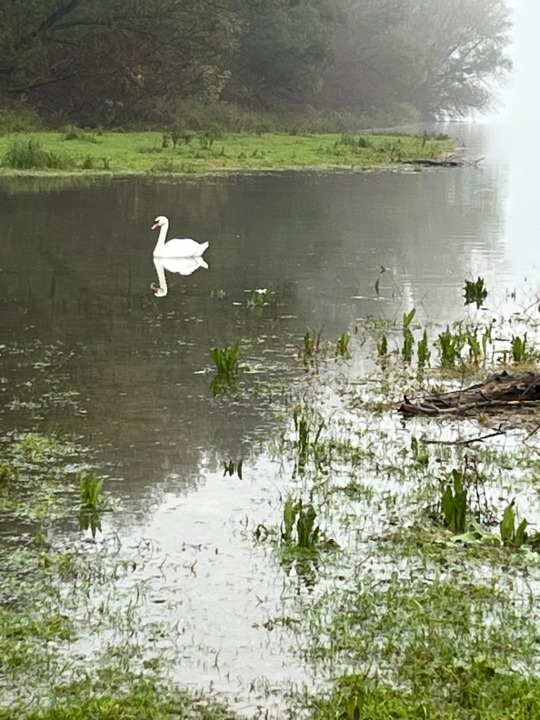
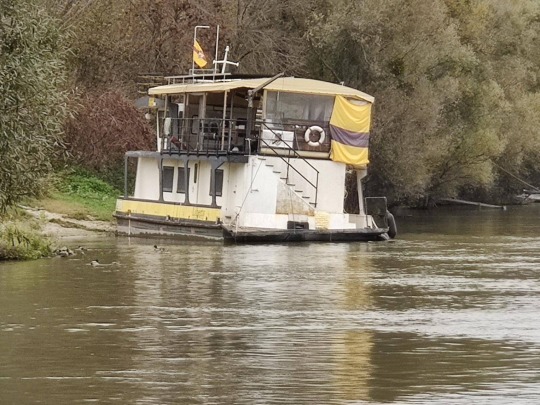
#Liberland #Settlement on #Liberty #Island
(Report from Iben)
#settlers #danube #nature #swan
0 notes
Text

Nikolai Nikanorovich Dubovsky (1859-1918).
Pink clouds. Calm. 1909.
Oil on canvas.
Canvas without a stretcher.
On the back of the canvas: "N. Dubovskoy//1909".
Expert opinion - Goryacheva T.P. (2013).
Decorated in a frame.
Russian painter, graphic artist. Born in 1859 in Novocherkassk, in the family of a hereditary Cossack. He studied at the Kiev Vladimir Military Gymnasium (1872-1877), then, as a scholarship holder of the Donskoy army, at the IAH (1877-1882) in the class of landscape painting with M. K Clodt. In 1879 he received a small silver medal, in 1880 for drawing from nature and the painting "Slamp" - two large silver medals. In 1882 he left the Academy without completing the course. In 1892 he received an IAH certificate for the right to teach drawing and drawing in secondary schools. He lived in St. Petersburg (Petrograd). He worked as a landscape painter, rarely engaged in portraits. In the 1890s-1900s, he repeatedly made trips to the Don, the Sea of Azov, the Volga. He traveled a lot to European countries, visited Italy (1892, 1895, 1897, 1898), Greece (1892, 1894), Turkey (1893), Switzerland (1895, 1897, 1903, 1908), France (1898), Germany (1912), the islands of the Greek archipelago, on the Danube (1892). Since 1886 - participant of exhibitions. Member and exhibitor of TPHV (1886-1918, intermittently; since 1895 - member of the Council and Board of TPHV), the Circle of Don Artists (1893-1914, with interruptions), the Association of South Russian Artists (1894). He also participated in the All-Russian Industrial and Agricultural Exhibition in Nizhny Novgorod (1896), international exhibitions in Munich (1897, 1909), the World Exhibition in Rome (1911) and others. He was awarded a small silver medal at the World Exhibition in Paris (1900) for the paintings "Stil", "View of the monastery", "To the evening"; as well as a small gold medal at the international exhibition in Munich (1913) for the paintings "Monastery near Moscow", "Before the thunderstorm", "Black Sea". In 1898, "for his fame in the artistic field" he was awarded the title of academician. Since 1897, he has been regularly elected to various committees and commissions operating in the IACH. In 1900 he was elected a full member of the IAH, since 1908 - a member of the IAC Council, since 1915 - an indispensable member of the IAC Council, since 1911 - professor-head of the landscape workshop of the Higher Art School of Painting, Sculpture and Architecture at the IACH. Since 1910 - full member of the Society of Artists named after A. I. Kuindzhi. One of the organizers of the Union of Artists of Petrograd. Retrospective exhibitions of the artist's work were held in Leningrad (1938), Novocherkassk (1946, 1947), Rostov-on-Don (1948, 1955). Dubovsky's works are in many museum collections, including the State Tretyakov Gallery, the State Russian Museum, the Novocherkassk Museum of the History of the Don Cossacks, the Rostov Regional Museum of Fine Arts and others.
Nikitskiy
13 notes
·
View notes
Text
Romania and his relationships
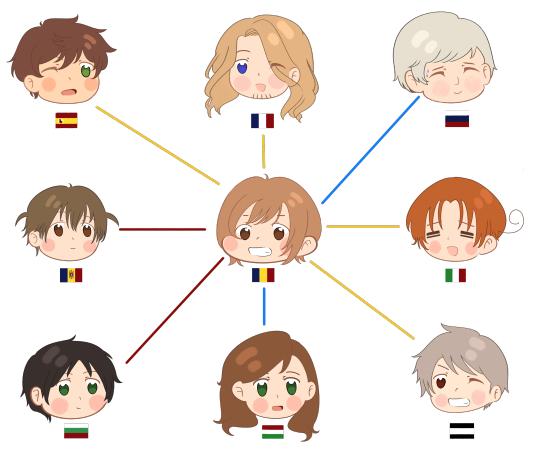
La mulți ani, România! 🇷🇴
As a special treat for today, here are some headcanons about Ro and his closest relationships throughout the years. The lines stand for family, friends and tense relations.
Romania
Was "born" as a result of the Romanization of Dacia (106 - 271 CE)
And gradually became known as Wallachia even though he represented all the Romanians in the Carpato-Danubian-Pontic territory.
A troublemaker with a fatalist attitude.
He's a gourmand but regrets it because his food is heavy.
Is acutely aware of his position as a Latin "island" in a Slavic "sea” and is extra sensitive when people try to deny his heritage.
Has a complicated relationship with the Church. His faith is almost as important to his identity as his language because it kept him from assimilating with the empires which ruled him (the Catholic Austro-Hungarians and the Muslim Ottomans).
Lately, his fashion choices have become more daring and experimental.
He's very street-smart and can blend in with any crowd.
He's very superstitious and believes in old-world remedies. He’s big on conspiracies and sometimes thinks the world is plotting against him.
Is proud of the inventions his people gifted the world, like the fountain pen, the first experimental air jet, insulin and so on.
Does anything in his power to avoid staying in Bucharest and owns houses in several cities (like in Sibiu).
Still does not know what to make of communism.
He's a sweet tooth and has been known to claim ownership of his neighbors' food: "What do you mean găluște cu prune are not Romanian? Of course they are!"
He'll roll his eyes when he hears someone mention Dracula but will overlook it if it brings him 💰.
Can speak Greek thanks to being ruled by Phanariots for so long.
Wants to punch something every time Ned opens his mouth. The same goes for Hungary.
He's hardworking and eager to keep up with the rest of the world.
Romania has one of the highest emigration rates in the EU so Ro should have an episode in which he travels abroad to work just like Romano.
Romania and Bulgaria
One of Ro's closest and longest relationships.
They've seen each other at their best and worst.
Their earliest encounter occurred between the 3rd and 7th centuries when the Bulgar and Slav migratory peoples crossed Ro's territory to settle south of the Danube.
Back in the day, Bul personally taught Ro the Cyrillic alphabet. Ro went on to use it until 1862 when the then-ruler of the United Romanian Principalities decreed that the Latin alphabet must replace the Romanian Cyrillic alphabet.
That's right, kids. Romanian, a Latin language, used to be written in Slavic script.
Saw a great deal of each other during their time as Ottoman vassals.
Ro had personally sheltered Bul during his time as a revolutionary émigré. Wallachia became a safe haven for hundreds of Bulgarian revolutionaries during Ottoman rule. After Bulgaria's liberation in 1878, many chose to stay behind and settle in Romania.
Even though Ro and Bul did not always fight on the same side, they hold no resentment over their past. Only friendly jibes! Like Bul calling Ro a "shameless mămăligă eater."
Bul's seaside is very popular among Romanians, so Ro likes to visit Bul during summertime when Bul can hang out in his boxers all he wants and Ro can visit his late queen’s palace.
Nowadays, they bond over being EU’s late-bloomers and GOSSIP. Ro talks himself hoarse on the phone with Bul.
They also discuss the latest Turkish telenovelas but would rather die than admit they like them.
Ro and Russia
A very tense relationship
Have met first through Ro's little brother when Dimitrie Cantemir allied with Peter the Great to form an anti-Ottoman alliance.
Their relationship formalized during the 18th and 19th centuries when Russia demanded a say in Mol and Ro's internal affairs as the "big brother" of all Orthodox Christians in the Ottoman Empire.
Even though the Russian occupation protectorate did not benefit Ro and Mol much, it introduced the two brothers to their first government by law.
With the occupation, the Russians also brought over nobility customs, like ballroom dancing.
After Russia helped Ro gain his independence from the Ottoman Empire, the relationship got warmer (for a while).
King Carol I of Romania had even considered Tsar Nicholas's eldest daughter, Olga, a potential bride for his grandson, Carol II.
But after the Bolshevik takeover and the assassination of the Romanovs, Ro and Russia's relationship turned icy again.
One of the most sensitive topics today is the loss of Romania's national treasure, which was transported to Russia during WWI for safekeeping. Romania had to decide between sending the treasure to Great Britain or Russia. In the end, we chose to send Russia 93 tons of treasure as a display of mutual trust. After the October Revolution, the Bolsheviks seized the treasure and refused to return it. Since then, minuscule parts of the treasure have been returned as displays of "goodwill."
Their relationship hit an all-time low after the loss of Moldova and the installation of the communist regime.
Nowadays, Ro tries to keep his distance from Russia as much as geographically possible.
Ro and Hungary
Ro’s other historically tumultuous relationship
Ro has been the underdog for much of their shared history, but the tables turned after 1918 with Transylvania's independence and Romania’s unification.
Ro remembers a time when both had fought against a common enemy - the Ottoman Empire.
But that alone isn't enough to get over their past.
Ro probably gatecrashed Austria and Hungary's wedding and did everything in his power to be a constant nuisance under their rule.
He sends text messages to Hungary every year on the 4th of August, saying, "you're welcome." Hungary knows to block his number on that day.
Nowadays, I see them being (somewhat) tolerant of each other (even cordial during spells of drunkenness).
Ro can speak fluent Hungarian and shares a people with Hungary.
Ro and Italy
Home to Ro's largest diaspora
One of Ro's closest relationships
Have an easy time understanding each other thanks to their common Latin heritage.
Italy is a popular holiday destination among Romanians, and Ro admires the Italy brothers' culture greatly.
Although they like to tease Ro about his Latin origins, which never fails to annoy Ro.
Ro and Spain
Home to Ro's second-largest diaspora
A generally warm relationship
Romanians are very taken with anything Spanish (see that Romania sent to Eurovision three songs in Spanish: Zaleilah, Llámame , Liubi Liubi, I Love You).
Also have an easy time understanding each other thanks to their common Latin heritage.
Both are very friendly and hospitable, but Ro tends to be more serious and pessimistic than Spain.
Ro is a big fan of Spanish telenovelas and has a romanticized image of Spain (flamenco, paella, sunshine and passionate lovers).
France and Ro
One of Ro's closest and most complicated relationships that had once resembled that between a mentor and his protégé.
Especially during Napoleon III's reign when Napoleon actively championed the unification of the Romanian Principalities (Ro and Mol) under a single ruler.
Take that Austro-Hungary, the UK and the Ottomans! 😝
Most of Ro's intellectual class during the 19th and early 20th century was educated in France or emigrated to France at some point.
In turn, plenty of important French figures contributed to Ro's modernization. French architects such as Albert Galleron built some of Romania's most symbolic landmarks, e.g., the Romanian Atheneum, while pioneers such as Carol Davila reformed Romania's national health system and founded its first ambulance system and Bucharest's School of Medicine.
Ro wanted to emulate everything French to the point that Bucharest became known as 'Little Paris' (see that we also have our own Arc de Triomphe).
Ro speaks fluent French and is an avid Francophile.
Although everyone jokes about the white-handkerchief-waving French, the opposite is true in Romania.
Much of the Romanian army's success on the Eastern Front during WWI was owed to General Henri Berthelot, who reorganized, equipped and trained the Romanian army.
After his mission here, he became so attached to Romania that upon seeing the Romanian detachment march during the 1919 Paris military parade, he told a French marshal: "Foch, saluez ! C'est la famille."
Much like Poland, Ro gave France some of his most brilliant minds and talents, like Constantin Brancuși, Emil Cioran, and Eugen Ionescu.
During the Cold War, Ro and France's relationship became colder. Yet Ro was grateful to France for sheltering his dissidents who fled the communist regime.
Nowadays, Ro still looks up to Francis but can't stand his arrogance.
Ro and Prussia
First came in contact during the Teutonic Knights' mission in Transylvania in 1211.
Maintained ties thanks to the presence of Saxons in Transylvania.
Ro and Gil became very, very close after the Romanian Parliament elected Prince Carol of the Prussian dynasty Hohenzollern-Sigmaringen to rule Romania.
Trash-talked Austria at every opportunity given the historical rivalry between the Habsburgs and the Hohenzollerns.
Had a tense relationship during WWI and WWII because Ro liked to switch sides a lot.
Ro was a neutral country until 1916, then an Entente power until 1917, then signed an armistice with the Central Powers in 1917, only to rejoin the war on the Entente's side ONE DAY before the war ended in 1918.
(Congrats Ro! You won the war out of sheer luck.)
Ro switched sides again during WWII and ended up on the Allies' side after initially joining the Axis.
You can see why Gil found Ro such a reliable ally.
Ro and Gil (then DDR) reconnected during the Cold War and maintain an amicable relationship today.
Ro speaks fluent German thanks to his Transylvanian Saxon population.
Mol and Ro
They're the cutest brothers, and I would die for them.
Their relationship holds a deep sense of loss and regret that might never disappear.
There was a time when Mol was admired by all his neighbors (like in 1497 when Ștefan cel Mare put the Polish in their place), and Ro was the proudest brother.
1859 - 1940 was perhaps the happiest time of their life because they were finally together.
Nowadays, Ro knows that Mol is not the same as he was before 1940.
After 1991, Mol found his voice, and Ro couldn't be prouder to see his little brother come into his own.
Still! His growth is so bittersweet!
Ro and Mol always give each other 12 points during Eurovision and consider it the height of betrayal if one doesn't.
Ro sometimes "forgets" to remind people that O-Zone was a Moldovan band.
#aph romania#hws romania#aph prussia#hws prussia#aph france#aph bulgaria#hws france#aph moldova#hws moldova#aph hungary#hws hungary#aph spain#hws spain#aph italy#hws italy#aph russia#hws russia#my fanart#look at the size of this!#and I cut out a good chunk of it too!#Happy National Day Ro!#my hetalia content
69 notes
·
View notes